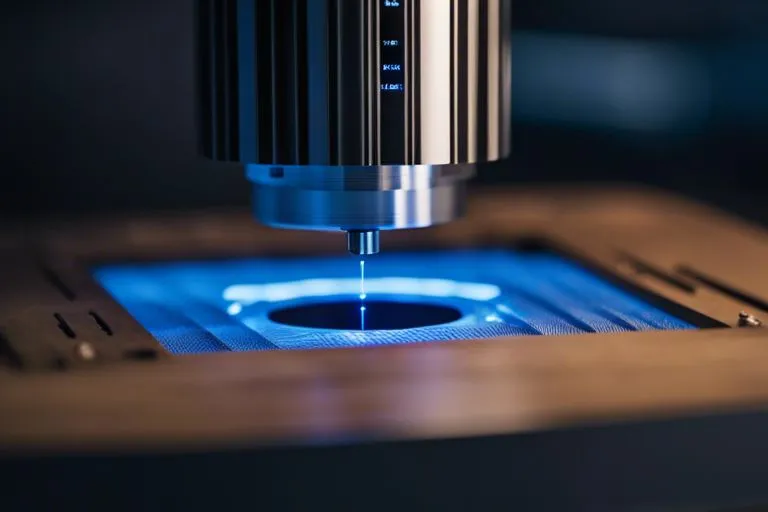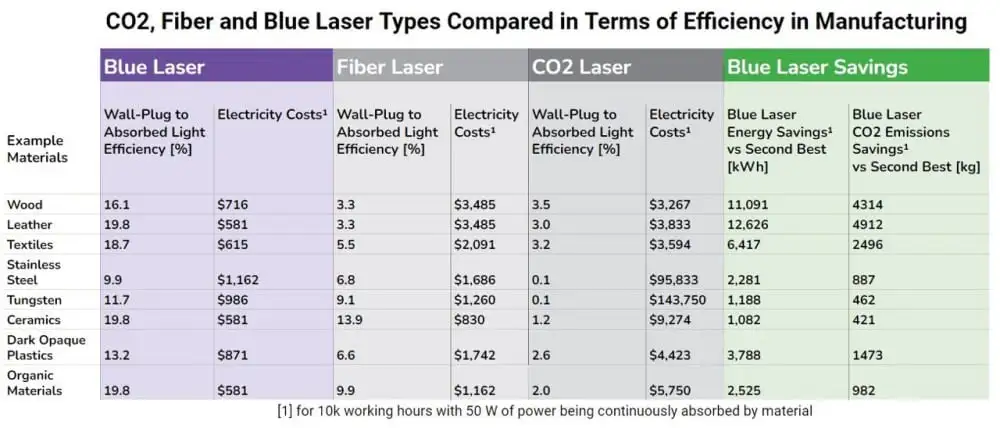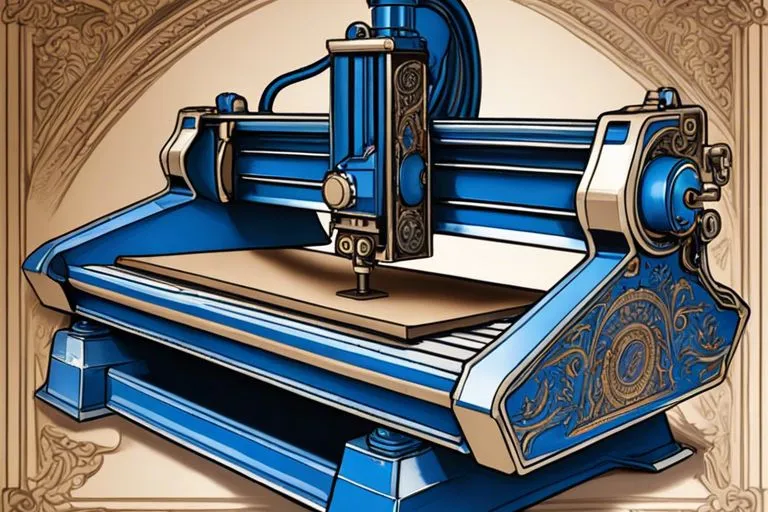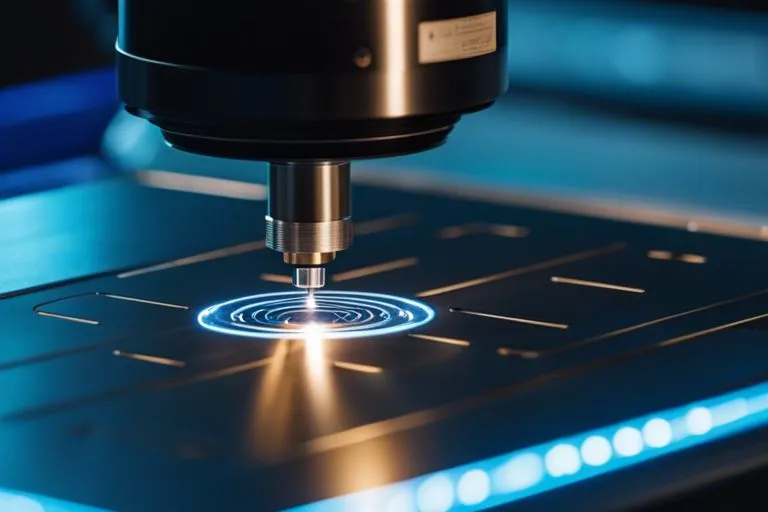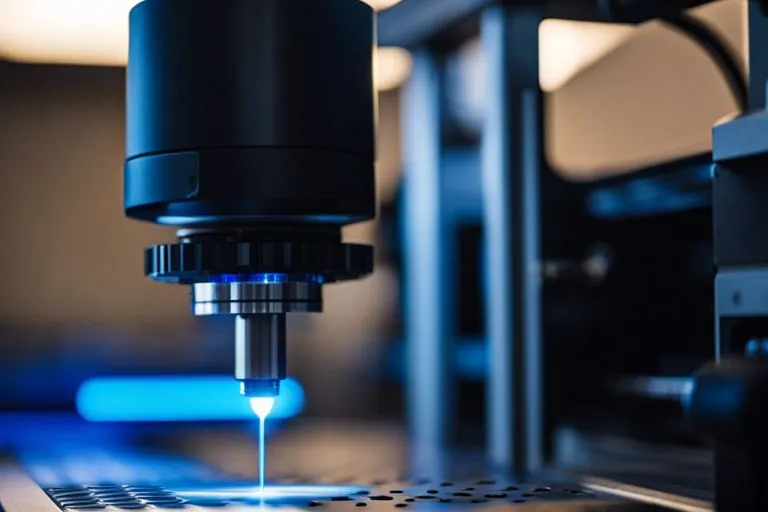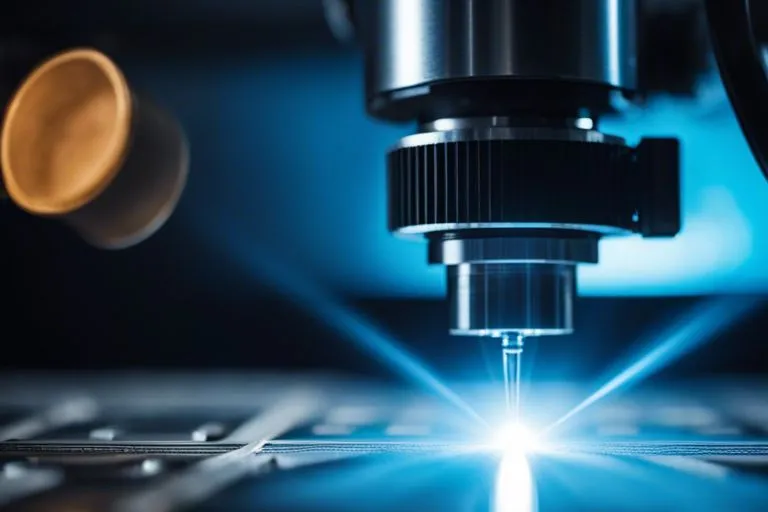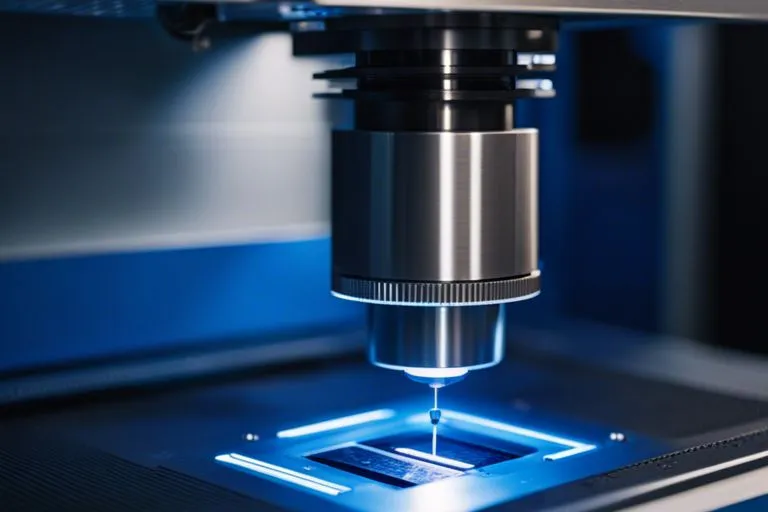CNC Laser and Its Applications in Industry and Science
Laser technology has revolutionized the world of fabrication and design, enabling precision cutting and engraving with incredible speed and accuracy. A CNC laser machine offers unparalleled accuracy and repeatability, making it a valuable tool for manufacturers, artisans, and hobbyists alike. Many industries rely on CNC lasers to cut and engrave various materials with precision and efficiency. This technology combines the power of a laser beam with the versatility of a CNC machine, allowing for sophisticated engraving designs and complex cuts to be made with ease. The most efficient type of CNC lasers are based on the blue laser technology. Understanding how this technology works and its applications can provide insight into its widespread use across different industries.
The Definition of CNC Laser
A CNC Laser is a tool that uses a high-power laser head or laser module to cut, engrave, etch or mark materials with precision. Most commonly, the phrase CNC laser refers to a blue laser upgrade kit, set up on a CNC machine such as, for instance, Shapeoko Pro or X-Carve Pro. CNC lasers are commonly used in manufacturing, prototyping, and artistic applications, but it can also be used in science and research. In manufacturing, prototyping and artistic applications, the laser beam is used to cut, etch, engrave and mark. In science and research, the laser can be mounted on a high-precision CNC machine to move the laser to a specific location above a specimen or object, and then use the laser beam for optical pumping, inducing fluorescence or as optical tweezers. The majority of applications of CNC lasers rest in manufacturing however.
In manufacturing, there are various types of lasers in use on CNC machines. Historically, CO2 CNC lasers have been developed a long time ago and consequently they are now available in a multitude of optical laser powers. However, CO2 CNC lasers are an obsolete technology nowadays for several reasons. Primarily, any CO2 CNC laser wastes 95-96% of the supplied electrical power, while it also typically has a slightly worse absorption than a blue laser on the majority of processed materials. Besides that obvious drawback, CO2 CNC lasers also require burdensome and frequent calibration, and are much heavier and larger in size, making it difficult to move them when required. In fact, looking just at space considerations, you can fit approximately 100 blue laser heads in the same space as a single CO2 CNC laser machine.
Nowaydays, it is much more efficient to use a blue CNC laser rather than a CO2 or fiber laser. Blue CNC lasers are offered in two variants, either as a blue galvo cnc laser or CNC machine equipped with a laser upgrade kit. A blue laser head mounted on a CNC machine works extremely well for both cutting and engraving, and is particularly effective in the role of a CNC laser cutter. In contrast, blue galvo CNC lasers contain a larger blue laser module, and move the laser beam with special galvo mirrors allowing for lightning speed cnc engraving (for instance 79 inches per second or 2 m/s), although they can also be used for cutting very thin materials. Effectively a blue galvo laser is a very efficient CNC laser engraver.
A blue laser head refers to a laser module that emits a focused blue-colored laser beam. Blue lasers are known for their high energy efficiency, higher absorption on the majority of materials, and precise cutting and engraving abilities, making them ideal for most applications. The laser beam carbonizes, vaporizes or melts the material, creating precision cuts or detailed engravings as per the design input.
Opt Lasers is a leading manufacturer of blue laser heads for CNC machines as well as blue galvo lasers. We are known for the top-quality laser modules that offer superior performance and reliability, lasting 20-200 times longer than other blue lasers on the market. A CNC equipped with a blue laser head can laser cut and engrave a variety of materials, including wood, leather, fabrics, carbon fibre, acrylic & other plastics, as well as paper to name a few examples. It can also laser engrave or mark certain metals such as stainless steel, carbon steel, Tungsten, Titanium and anodized aluminium (but not bare aluminium).
For instance, the buttons presented below lead to dedicated CNC-machine categories (for a range of popular CNC machines) which list dedicated laser kits for these CNC machines. Setting up a laser kit on these machines turns them into a CNC laser machine, apart from their base CNC milling functionality. In case you already own a CNC machine, but from a different manufacturer, you should go to the "Other CNC & Robots" category, where you can purchase a universal laser kit that can be inegrated on almost any CNC machine.
Understanding CNC Machinery
Basics of CNC Machines
The heart of any CNC machine is its computer numerical control system, which allows for precise control of the equipment's movements. CNC machines operate based on a set of instructions which are sent in a form of G-Code to the CNC machine's controller. The CNC controller tells the machine how to guide the tool along the correct path to create a desired component or product. The CNC controller is also responsible for sending the laser modulation (control) signal, which tells the laser when to fire, with what laser power and for how long.
Integration of Laser Technology in CNC
With respect to CNC machinery, the integration of laser technology has revolutionized the capabilities of these machines. By adding a CNC laser head to the equipment, users can perform laser cuts and engravings with unmatched precision and speed. The blue laser itself can be as precise as 0.00039" (0.01 mm). A CNC laser machine lases the beam at a given power practically instantaneously, unlike the spindle or endmill, which require non-negligible time to speed it up. What's more, laser processing is a non-contact method. The laser processes the material from a distance, unlike saws and endmills that eventually get blunt because of the contact processing. At the same time, the blunting of cutting tools can be particularly problematic for certain processes, for instance, the CNC cutting of leather. On top of the previous advantages of using lasers on CNC machines, the laser can also reach much higher speeds.
Integration of laser technology in CNC machinery has opened up a world of possibilities for industries such as manufacturing, prototyping, and even artistic endeavors. The capabilities of a CNC laser head provide users with the ability to work with materials like wood, leather, acrylic, textiles and even metals, with ease and accuracy that was previously unimaginable.
The Blue Laser Kits from Opt Lasers
Features of Opt Lasers' Blue Laser Heads
Some of the impressive features of Opt Lasers' blue laser heads include high precision cutting and engraving capabilities, higher absorption than ther laser types on the majority of materials, high energy efficiency, and a compact and lightweight design for easy integration into CNC machines and seamless operation. What differentiates Opt Lasers from other companies offering blue lasers is that Opt Lasers' laser heads are made with top-quality components, use meticulously engineered designs, and effectively last 20-200 times longer than competing products last on average. This in turn is also very useful money-wise, as you can use a single Opt Lasers' blue laser head instead of purchasing 20-200 blue laser modules from different manufacturer that in total accrue much higher costs. Opt Lasers' high quality also allows our products to serve 24/7 continuously.
Applications and Compatibility
With a wavelength of 445 nm, blue lasers are ideal for cutting and engraving a variety of materials. Most CNC machined materials absorb blue lasers much more efficiently than other types of lasers. Hence, it is typically more useful to talk about outlier materials rather than the ones that blue lasers are excellent for. The most commonly mentioned material that blue lasers currently cannot engrave is bare aluminium (although blue lasers can engrave anodized aluminium). Plastics, with its vastness of different polymer compositions, are also a category in which blue lasers may not always be the best option (although often are). In our experience, blue lasers are the best efficiency-wise for approximately 80% of plastics that we were enquired about and with which we performed the laser cutting and engraving tests for our clients.
Blue CNC laser compatibility with a range of CNC machines makes it a versatile tool for professionals in various industries, including leather tanneries, woodworking factories, furniture producers, textile mills, jewelry producers, and signage manufacturers. Applications for blue CNC laser heads are vast and include engraving designs on jewelry, labels on fruits and vegetables, EPAL and GMA labels on wooden pallets, cutting and engraving patterns on wood or acrylic, and branding items with custom logos, photographs, or messages. Its compatibility with popular CNC machines makes it a valuable addition to any manufacturing plant, office or workshop looking to expand its capabilities in cutting, etching, engraving and marking.
Material Processing with CNC Lasers
Types of Materials Suitable for Laser Cutting and Engraving
Now, let's explore into the various materials that are suitable for processing using CNC lasers. From wood and acrylic to leather and metal, CNC lasers can cut and engrave a wide range of materials, yielding top-notch engravings and cuts with uniform and well-defined features. The blue laser technology offers versatility in material processing, making it the best choice for many industries. Information about example CNC-laser-processable materials can be broken down into the following table:
| Materials Engraved and Cut with CNC Lasers | Examples |
|---|---|
| Wood | Oak, Birch, MDF, Balsa |
| Plastics | Polymethyl methacrylate (Acrylic/Plexiglass), Nylon, PLA |
| Leather | Cowhide, Lambskin, Pigskin, Kangaroo Leather |
| Metal | Steel, Tungsten, Copper, Titanium, Anodized Aluminium (not bare Aluminium) |
| Fabrics | Cotton, Wool, Nylon, Polyester |
The above table showcases the versatility of CNC lasers in handling various materials for cutting and engraving processes.
Advantages of Using Blue Laser Heads in Material Processing
The incorporation of blue laser heads in material processing offers numerous advantages. The precision and accuracy provided by blue lasers result in clean cuts and detailed engravings. Moreover, the high energy density of blue lasers allows for efficient material removal, reducing the need for secondary processing. This technology enhances the overall productivity and quality of the finished products, making it an invaluable tool for businesses seeking precision in their manufacturing processes.
Understanding the benefits of using blue laser heads in material processing can help businesses make informed decisions when choosing the right technology for their operations. With improved efficiency, accuracy, and versatility, CNC lasers with blue laser heads are revolutionizing the way materials are cut and engraved across various industries.
Potential Future Applications and Technologies
Applications of CNC lasers are vast and continue to expand. From intricate designs on jewelry to large-scale industrial fabrication, CNC lasers have the potential to revolutionize various industries. The world's first 15 W CNC laser head with three laser diodes was released in 2021 by Opt Lasers. This was followed in early 2024 by another release of world's first 45 W blue laser, with 8 blue laser diodes, and was also accomplished by Opt Lasers. In the future, we can expect to see advancements in automation, faster cutting speeds, and the ability to work with an even wider range of materials.
Future developments in CNC laser technology may also include advancements in sustainability and environmentally friendly practices. As the world shifts towards greener technologies, blue CNC lasers are the best technology to minimize waste and energy consumption, making them even more appealing for a wide range of applications.
Maintenance and Safety
Proper Maintenance of a CNC Laser Machine
On a CNC laser machine, regular maintenance is crucial to ensure optimal performance and longevity of the equipment. It is important to regularly clean the focusing lens to prevent residue buildup that can damage the lens' coating, eventually affecting cutting and engraving quality. Additionally, using an air assist and air compressor with added filter and oil separator allows the user to clean the lens 10 times less often.
Safety Precautions When Operating CNC Lasers
Proper safety precautions must be observed when operating a CNC laser to prevent accidents and injuries. Operators should wear appropriate protective gear, such as safety glasses and gloves, to shield their eyes against laser and debris. Most importantly, the laser safety glasses should have as high OD for the laser's specific wavelength as possible. If your laser safety glasses' OD specification for your laser's wavelength is 0, it means the glasses offer no protection against your particular laser, essentially leaving you as unprotected as if you were not wearing safety glasses at all. The effectiveness of laser safety glasses increases with a higher OD specification for the relevant laser wavelength. For example, the blue laser safety glasses included in Opt Lasers' laser kits boast an OD7+ rating for blue laser wavelengths between 440-455 nm, effectively blocking over 99.9999% of the blue laser light. It is advisable to avoid laser safety glasses marketed for laser engraving that have an OD4+ rating for 405 nm and 445 nm wavelengths, as these allow nearly 0.01% of the laser light at 445 nm or 405 nm to pass through, offering significantly less protection.
It is also important to ensure proper ventilation in the workspace to disperse fumes generated during cutting and engraving processes. Understanding the potential hazards associated with operating a CNC laser is important for safe usage. Operators should be trained on how to properly handle the equipment, including emergency procedures in case of a malfunction. Adhering to safety guidelines and operating procedures will minimize risks and ensure a secure working environment.
To wrap up
Now, understanding what a CNC laser is, and how it works, provides limitless possibilities for cutting and engraving various materials with precision and efficiency. This technology blends the power of a laser with the precision of a CNC machine, offering a versatile solution for industries ranging from woodworking to metal fabrication. By harnessing the capabilities of a CNC laser, manufacturers can achieve top-notch design engravings, and efficient cuts on a wide array of materials, revolutionizing the way products are made, altered and customized.
FAQ
Question: What is a CNC Laser?
Answer: A CNC laser is a laser head integrated on a CNC machine - a tool that uses a high-powered laser to cut, engrave, or mark materials with precision. It is commonly used in manufacturing, prototyping, and artistic applications.
Question: What is a blue laser head?
Answer: A blue laser head refers to a laser module that emits a focused blue-colored laser beam. Blue lasers are known for their high energy efficiency and precise cutting abilities, making them ideal for various applications.
Question: Who manufactures blue laser heads for CNC machines, aka CNC laser cutters and engravers?
Answer: Opt Lasers is a leading manufacturer of blue laser heads for CNC machines. They are known for their high-quality laser modules that offer superior performance, 20-200 times longer durability and reliability.
Question: What materials can a CNC laser cut and engrave?
Answer: A CNC laser with a blue laser head can cut and engrave a variety of materials, including wood, acrylic, plastic, leather, fabric, paper, and engrave certain metals like stainless steel or Tungsten.
Question: How does a CNC laser work?
Answer: A CNC laser works by directing a focused laser beam with high optical power density onto the material being processed. The laser beam then vaporizes, melts or burns the material, creating precision cuts or detailed engravings as per the design input.

